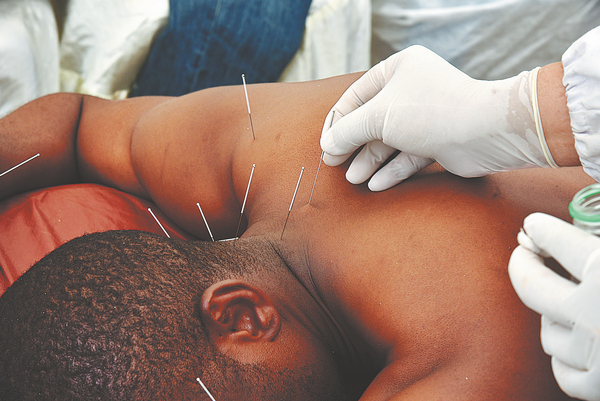For millennia, the ancient Chinese practice of acupuncture has held a critical place in Traditional Chinese Medicine (TCM). Acupuncture involves the insertion of thin needles into specific points on the body to influence the flow of “Qi” (pronounced “chee”), which is seen as a vital life force or energy in TCM. The practice has long been integrated into healthcare systems in several Asian countries and has gained increased acceptance in the West in recent decades.
At its core, acupuncture is about balancing the body’s energy pathways. According to TCM, disease occurs when there is imbalance or blockage in the flow of Qi. By stimulating acupuncture points along these pathways or “meridians,” practitioners aim to restore balance and promote the body’s ability to heal itself.
Acupuncture: From Theory to Practice
In a typical acupuncture session, practitioners will first conduct an extensive health history and physical examination. This is often followed by a tongue examination and palpation of pulse points at the wrists. These assessments inform the practitioner of the individual’s overall health and help identify imbalances in the Qi.
Using this information, the acupuncturist will insert needles at specific points, often far from the area experiencing symptoms. For example, a point on the lower arm might be used to treat headaches. The needles are left in place for between 15 and 30 minutes, and the practitioner may manipulate them to enhance the therapeutic effect.
The Science Behind Acupuncture
Despite its widespread use, the physiological mechanisms behind acupuncture’s effects remain largely mysterious. However, modern research has started to shed light on how it might work. Several theories have been proposed, most falling into two categories: neurological theories and biochemical theories.
Neurological theories suggest that acupuncture’s effects are mediated through the nervous system. Stimulating acupuncture points may activate peripheral nerves, which in turn send signals to the brain to release endorphins or other neurochemicals that can reduce pain or induce other therapeutic effects.
Biochemical theories, on the other hand, propose that acupuncture might influence the levels of hormones or other molecules in the body. For instance, some research suggests that acupuncture can affect inflammatory cytokines, which play a crucial role in immune response.
However, it is important to note that our understanding of acupuncture’s mechanisms is still in its early stages, and more research is needed.
Acupuncture in Modern Medicine
Acupuncture’s role in modern medicine remains a contentious issue. Many rigorous studies have found evidence that acupuncture can be effective for certain conditions, particularly for pain management. The World Health Organization lists a range of conditions for which acupuncture may be beneficial, including headaches, lower back pain, osteoarthritis, and nausea caused by chemotherapy or surgery.
Nevertheless, acupuncture’s efficacy is often difficult to prove conclusively, as it is challenging to design an appropriate control condition for acupuncture in clinical trials. The placebo effect also likely plays a significant role in perceived improvement following acupuncture treatment.
Furthermore, it is important to note that while acupuncture has a relatively low risk of side effects when performed by trained practitioners, it should not replace conventional medicine for serious or life-threatening conditions.
Final Thoughts
As our understanding of the human body and its complex systems continues to grow, the scientific exploration of ancient practices such as acupuncture becomes increasingly important. Though the mechanisms behind acupuncture remain largely unexplained, its potential to play a complementary role in healthcare is intriguing. By continuing to investigate and validate these practices within a scientific framework, we can potentially unlock new pathways to healing and wellness.
